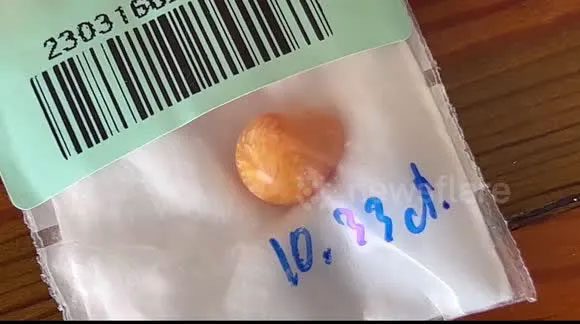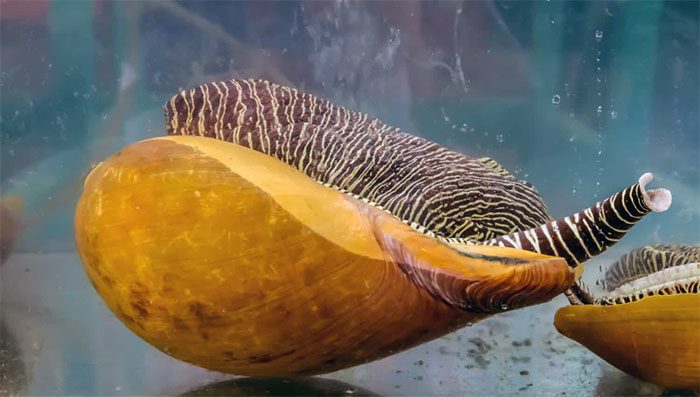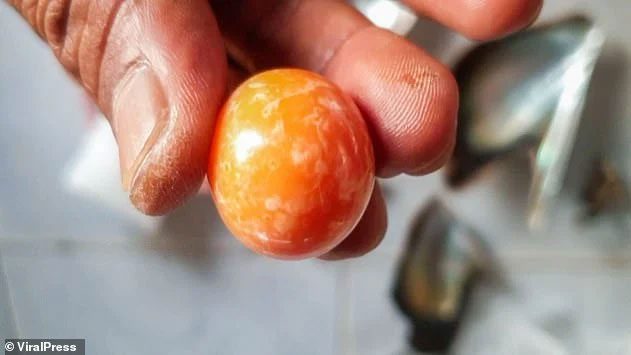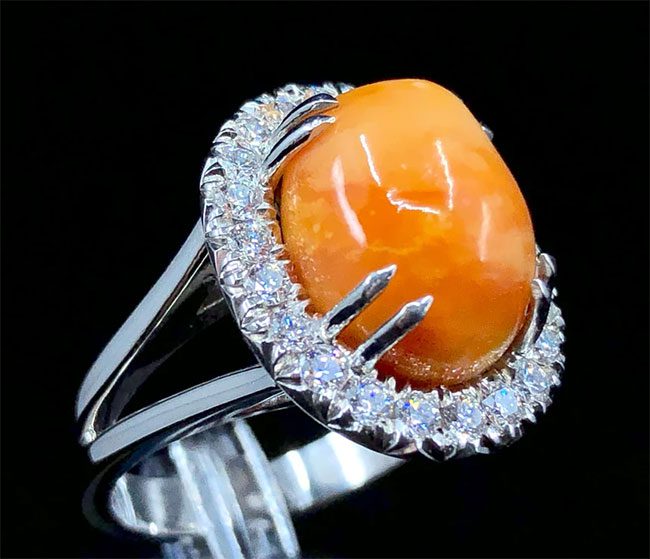A Man in Thailand Discovers a Life-Changing Rare Orange Object Worth Over 360 Million VND While Enjoying Snails with Friends
Amorn Prakongkwan, a 54-year-old man from Thailand, stumbled upon a rare Melo pearl valued at £12,000 (over 360 million VND).
Mr. Amorn purchased 7 conch snails weighing about 2 kg from a street vendor to enjoy a casual drink with friends. After cleaning the snails, he found a mysterious round orange object in the pot. Initially, he discarded it, thinking it was worthless. However, he later retrieved the orange object, thinking it might be a shell pearl.

The orange object found by the man in Thailand is a genuine pearl and very valuable. (Photo: Newsflare).
Mr. Amorn’s friends even paused their drinking session to help him investigate and confirm that the orange object was indeed a real shell pearl.
News of Mr. Amorn’s accidental discovery quickly spread to many jewelry collectors.
The Gem and Jewelry Institute of Thailand also confirmed that the 10.33-carat shell pearl is authentic. The pearl is valued at £12,000 (over 360 million VND), but Mr. Amorn hopes to sell it for around £23,500.
Mr. Amorn happily shared: “I often buy and eat a lot of conch snails, but I have never discovered a pearl inside until now. I will keep the pearl as a lucky charm. However, if someone offers a good price, I might sell it and use the money to buy a new car.“

Pearls found in conch snails are very rare. (Photo: a-z-animals).
Why Are Melo Pearls So Rare?

Melo pearls are very rare and often sold at high prices. (Photo: ViralPress).
Melo pearls, or shell pearls, are formed within the bodies of conch snails. This type of pearl is considered extremely rare because only a small percentage of mollusks produce them. Conch snails are relatively large and can be found in the seas around Thailand, Myanmar, Cambodia, and Vietnam.
Melo pearls are non-nacreous pearls. The process of creating this type of pearl is similar to that of traditional pearls, involving the natural cementation of limestone when a foreign object enters the sea snail. Unlike common pearls, which are usually white, Melo pearls primarily range from light orange to brown. Their limited quantity makes them even rarer, as they cannot yet be cultivated like traditional pearls.
According to experts, the older the conch snail, the larger the pearl, and the more beautiful and vibrant the patterns. The hardness of Melo pearls ranges from 19 to 21, while diamonds have a hardness of 100. Due to their relatively soft nature, these pearls are susceptible to scratches, wear, or breakage. Therefore, owners of Melo pearls need to be more careful in their handling compared to most other types of pearls.
The market value of the pearl that Mr. Amorn found can reach thousands of USD per carat, depending on the quality of the pearl.

Melo pearls designed into jewelry are sold at very high prices. (Photo: Globalgemology).
The largest Melo pearl known in the world weighs 397.52 carats, approximately three-quarters the size of a golf ball.
Due to the rarity of Melo pearls, there are no official standards for pricing. Instead, their value is determined based on quality, appearance, carat weight, and personal factors. When designed into jewelry, Melo pearls can command very high prices.
In fact, the famous auction house Christie’s has auctioned Melo pearls. High-quality pearls typically fetch prices above $75,000. Meanwhile, some pearls set in jewelry can sell for over $250,000.


















































